Towards Gender Equality Newsletter Issue #1: Learning from India
The first edition of the Gender and Growth Gaps Project Newsletter focuses on recent research insights in India, Season 2 Episode 3 of the Voices in Development Podcast titled "Digital Inclusion & Economic Development: Conversations with Pramod Varma, Alix Zwane, and Rohini Pande," and exciting events and news.

Welcome to our first Towards Gender Equality newsletter
On International Women's Day, welcome to the inaugural edition of the Yale Economic Growth Center and Yale Inclusion Economics "Towards Gender Equality" newsletter. We are introducing this newsletter as a forum for the community of researchers, practitioners, policymakers and journalists interested in evidence-based policy on gender gaps and economic development to share notes and updates on a regular basis.
In this first edition, we focus on India! Ten years ago, the Inclusion Economics initiative at Yale University (co-funded by EGC and Yale's Macmillan Center), and Inclusion Economics India Centre (formerly known as EPoD India) began a set of studies to understand Indian women’s economic and social challenges and policy levers to address them, as highlighted in this article. From Bihar to Chhattisgarh to Madhya Pradesh to Odisha, we have collaborated closely with public and private sector stakeholders and citizens from diverse societal backgrounds, and uncovered a host of important results, some of which we highlight in this newsletter. We also point to other colleagues’ current work on Indian women’s labor force participation.
In this newsletter we draw on a small selection of our studies to illuminate how growth processes in India are excluding women from the labor market, how women disproportionately faced labor market setbacks during COVID, and how gender norms shape labor market outcomes. More optimistically, we also show how policy can make a difference in addressing many of these constraints.
Our goal is to push the frontier of research and policy in this critical domain, and we invite you to join us in this journey!

Aishwarya Lakshmi Ratan
EGC Deputy Director
Research Highlights
1. As India Grows, Women Are Being Left Behind
Despite consistent growth in GDP per capita, increases in women's education, and declines in fertility, women’s labor force participation in India is low, and in many cases, declining (see Figure 1, updated from Fletcher et al., 2018). Moreover, urban women are less likely to be in the labor force than rural women.
Figure 1: As India grows, women are left behind
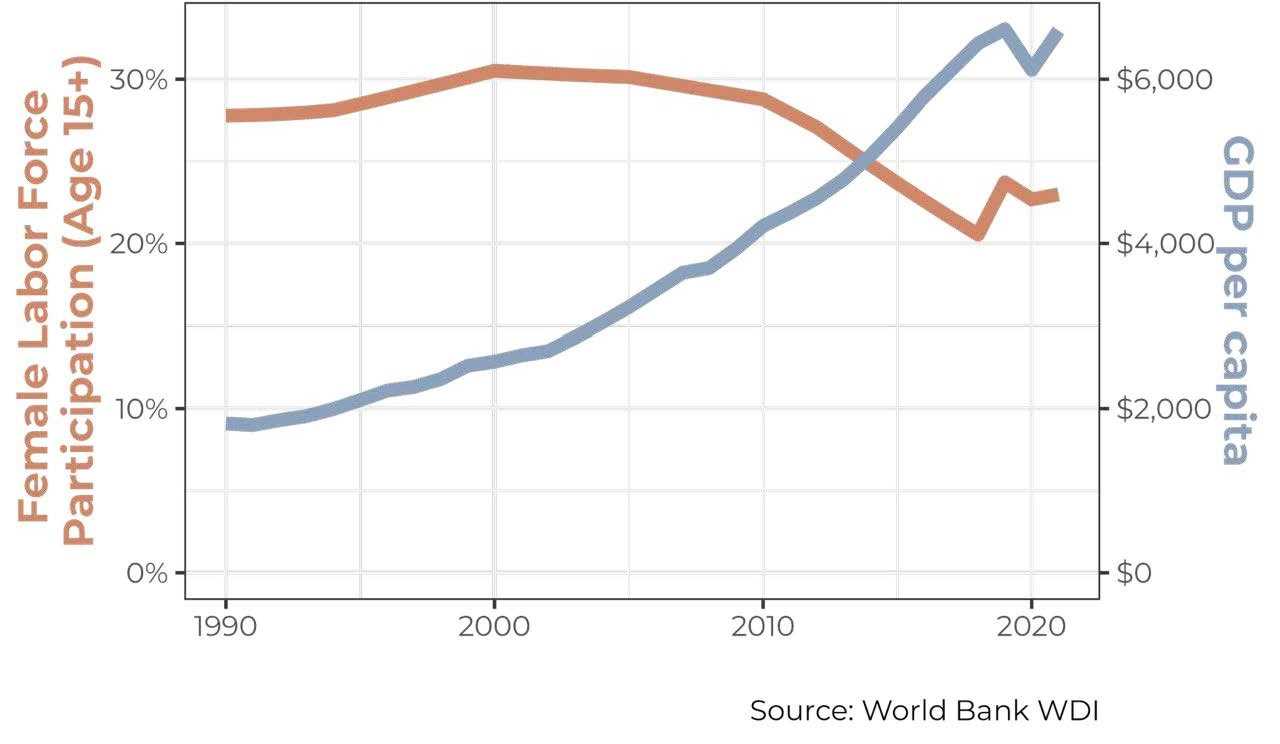
2. The COVID-19 Pandemic Disproportionately Affected Women
India’s nationwide COVID-19 lockdown forced millions of urban migrant workers to return to their home villages, making labor market reintegration a critical aspect of the country’s economic recovery. Allard et al. (2022) conducted a panel survey. They found that post-lockdown recovery of weekly earnings was slower to return to their pre-pandemic levels for women than for men, as shown in Figure 2.
Figure 2: Post-lockdown recovery of weekly earnings was slower for women
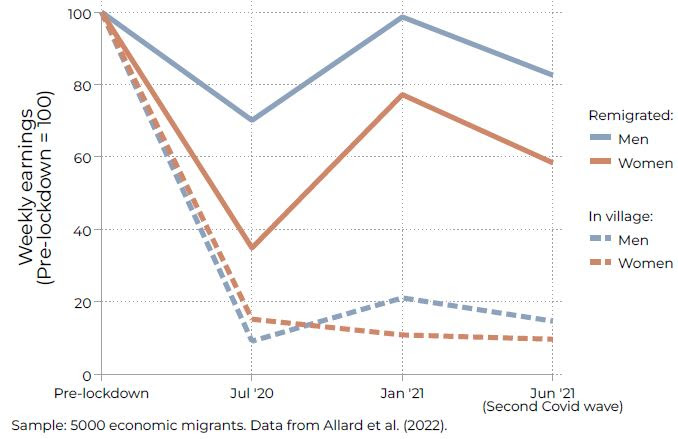
3. Gender Norms Hold Women Back in the Labor Market
In "Male Social Status and Women’s Work", Bernhardt et al., 2018 report that husbands’ perceptions of community judgment for having a working wife correlate with lower women’s labor supply in rural Madhya Pradesh, India. The study reveals that men are 41% more likely than women to view women working for pay as inappropriate. In 25% of households, women desire to work, but men oppose it. Figure 3 shows that men underestimate community approval of women’s work more than women do.
Figure 3: Women and men in Madhya Pradesh underestimate community acceptance of women’s work
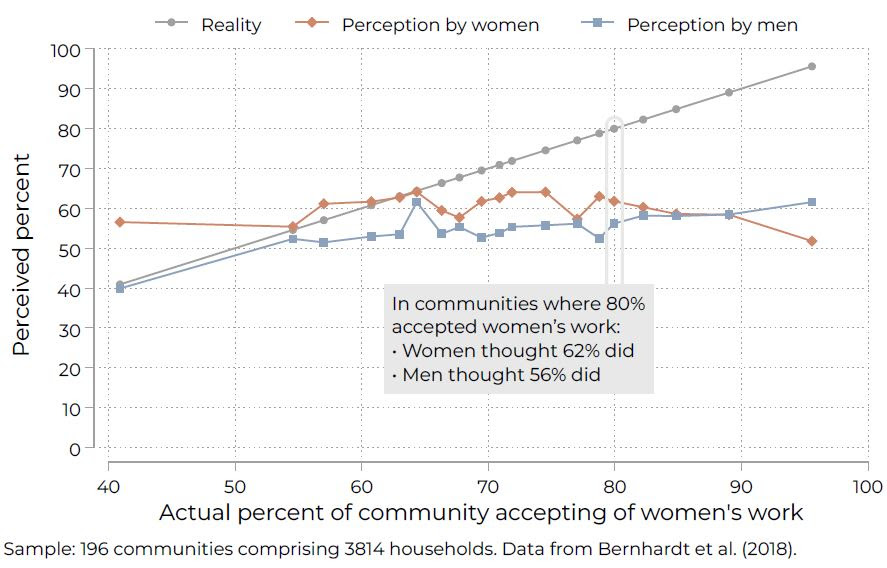
4. Effective Measures Can Be Taken to Improve Women’s Labor Market Outcomes and Change Gender Norms
Field et al. (2021) worked with the state government of Madhya Pradesh, India, to give women increased control over wages they earn in government workfare ensuring women had direct deposit payments and training to access those wages. This intervention significantly increased women’s participation in both public sector work and private wage work. Impacts are concentrated among women who had not worked for the workfare program previously, who also show signs of being constrained by restrictive gender norms in the household. In short, increasing women’s agency through enhancing her control over her own wages does not simply increase her well-being, it reduces the influence of the restrictive norms that kept women out of the workplace in the first place.
Read more about our learnings from a decade of research on women and the economy in India here.
Podcast: Digital Inclusion & Economic Development in India
In this episode of EGC's podcast series Voices in Development, Pramod Varma, the Chief Architect of Aadhaar, India's digital identification program, discusses the role of Digital Public Infrastructure in economic development, specifically in terms of increasing women's access to financial and digital services.
Featured Researcher: Charity Troyer Moore
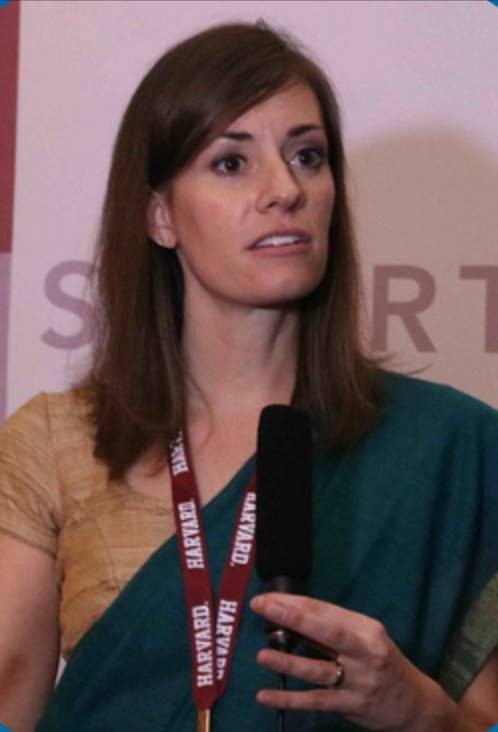
Charity Troyer Moore is the Scientific Director of Inclusion Economics at Yale University and a Research Scholar at Yale. Her research examines how the design and implementation of public policies can address inequalities within households and communities to promote equitable economic opportunities for marginalized groups.
She also studies the ways in which information and incentives interact within bureaucracies to influence service delivery for marginalized populations, and she has conducted research to better understand difficult-to-measure features of informal institutions and bureaucratic function.
Charity has developed long-term research-policy engagements in India, now led by the team at Inclusion Economics India Centre, that aim to support policy decision makers with data and evidence in areas ranging from access to social protection and local accountability systems to women's labor force participation. See Charity's website for more.
"Over the past 10 years, the tools of economics have allowed us to gain a much deeper understanding of how to elevate women’s voices and expand their economic opportunities. Yet future challenges may impede progress and even undermine the progress which has already been made, pointing to the importance of bringing the best of our research tools to bear to investigate what is working - and why or why not - so that women around the world can enjoy more equitable access to economic and social opportunities." — Charity Troyer Moore
Policy Engagement and Events
Gender & Growth Gaps in South Asia - Research and Policy Workshop (August 3, 2023)
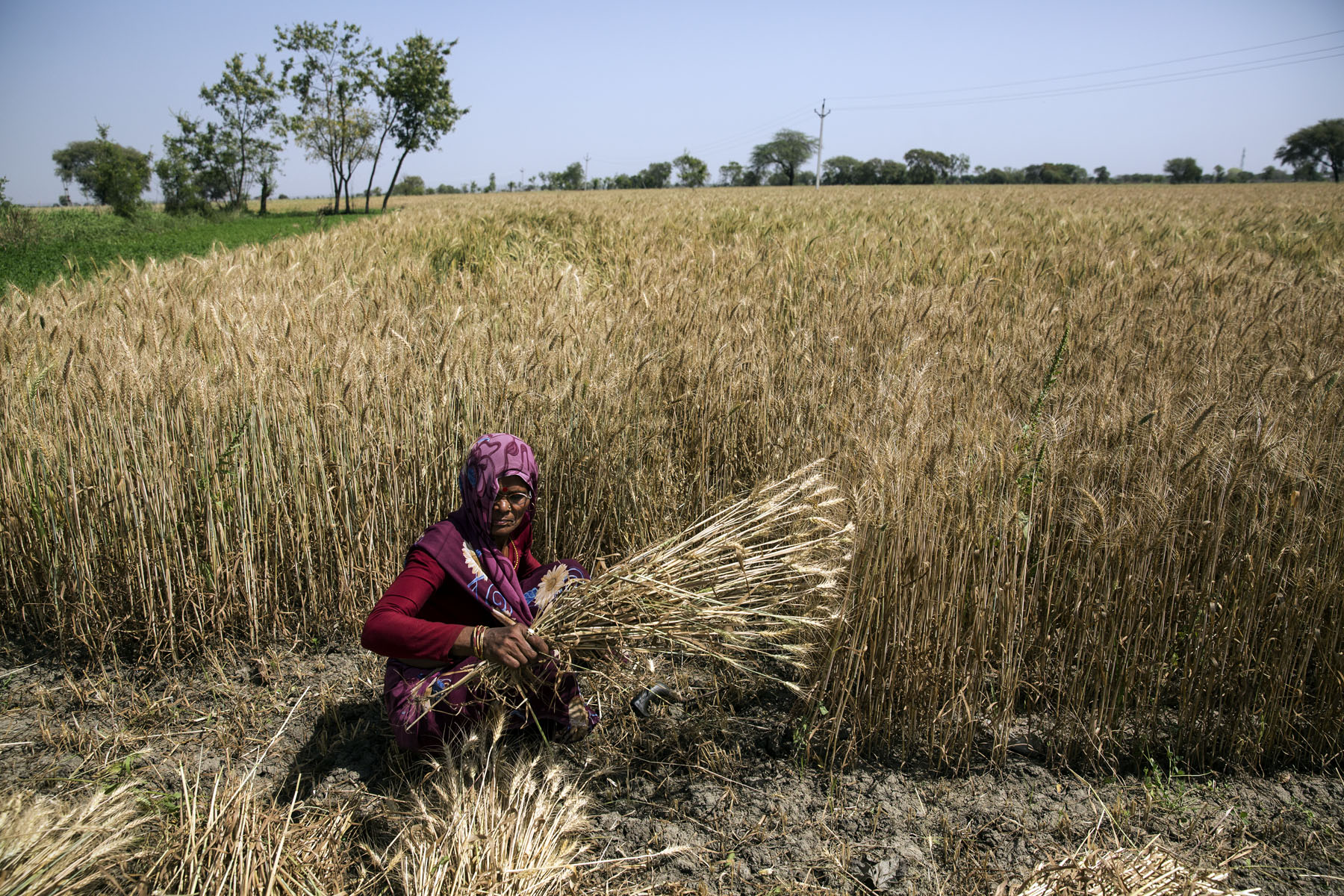 Ishan Tankha
Ishan Tankha
This workshop in Bengaluru focused on current policy needs and research insights on the drivers and consequences of gender gaps in the economy in twenty-first century South Asia.
Strengthening resilience in Bihar: A multidimensional roundtable discussion on safety nets and shock response mechanisms
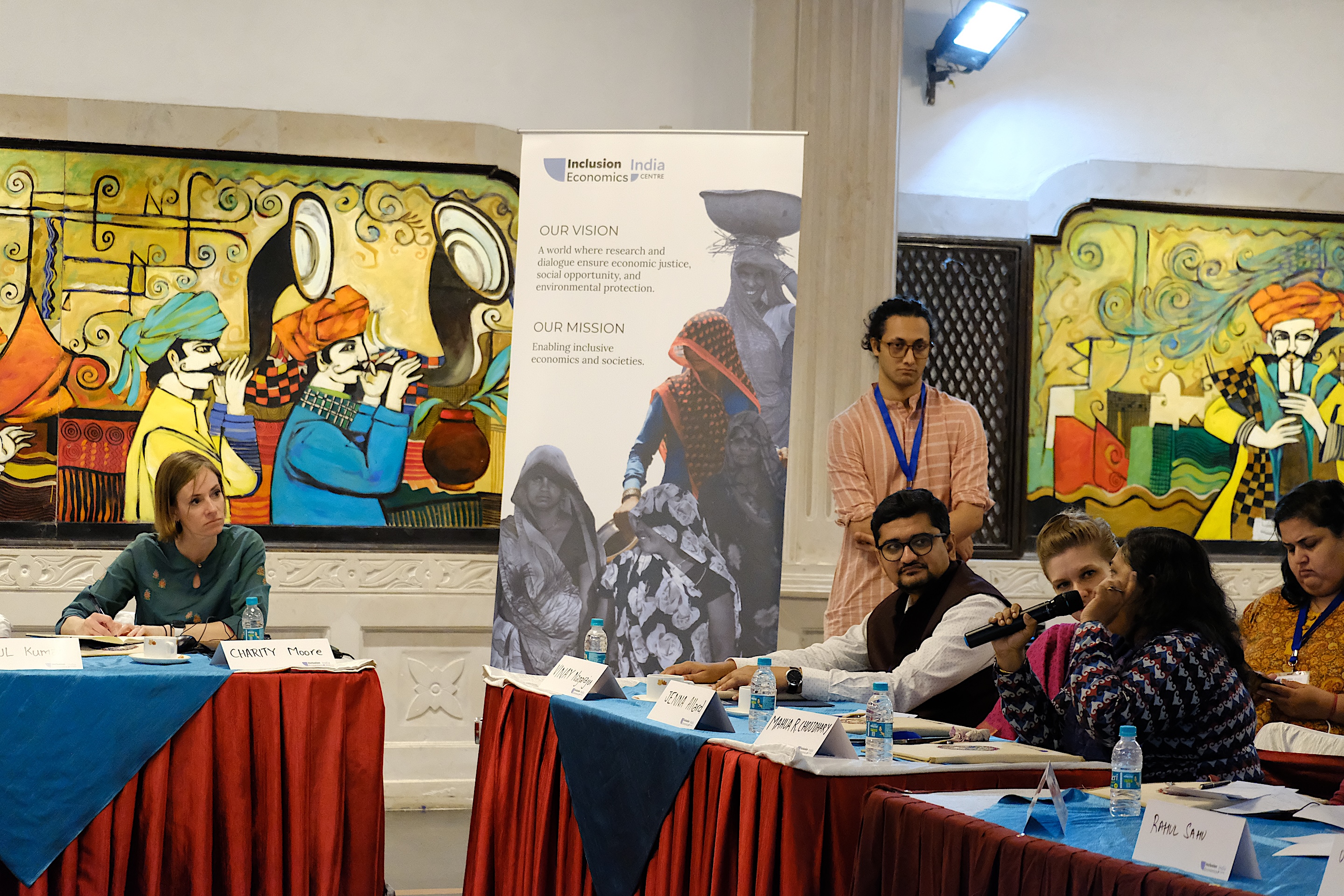
This roundtable was an opportunity to share evidence with and promote discussion between policymakers, academics, and stakeholders working to expand economic opportunity in Bihar.
ADBI-Yale University Conference on Gender-Sensitive Economic Recovery and Resilience in Asia (March 9-10, 2023)

This in-person conference and policy dialogue showcased new research on gender and economic opportunities in Asia and the Pacific, with a focus on gender-sensitive COVID-19 recovery and resilience building against future shocks.
Women, Ordeal & Opportunity through the Pandemic (July 22, 2022)
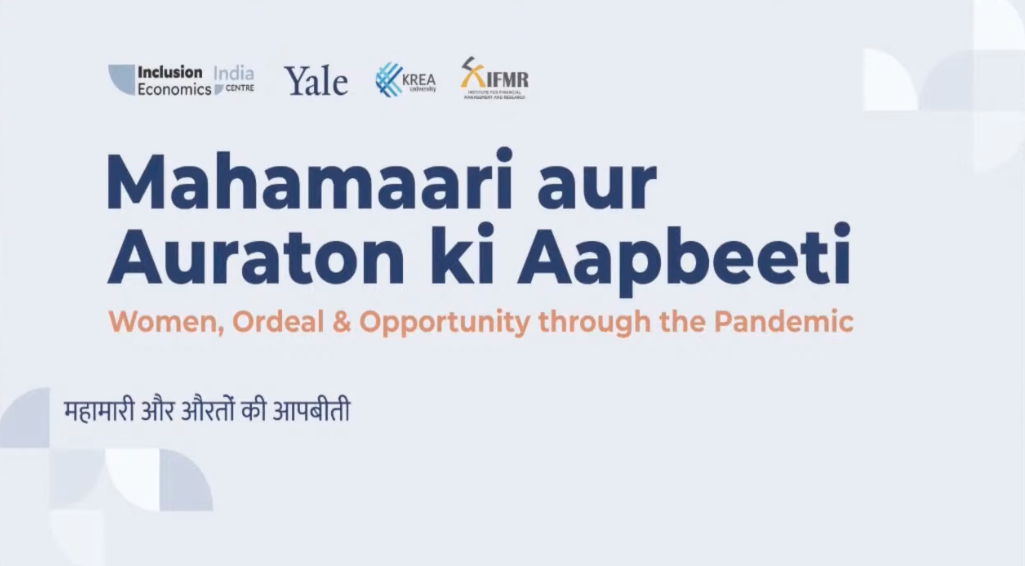
On July 22, 2022, Inclusion Economics India Center brought together affiliated researchers, journalists, and policymakers in its inaugural policy dialogue to shed light and spark discussion on the experience of Indian women through the pandemic, with a focus on their economic opportunities.
Exciting New Work in This Area
Aggregate Implications of Barriers to Female Entrepreneurship (2023)
The authors develop a framework for quantifying barriers to labor force participation (LFP) and entrepreneurship faced by women in developing countries, and apply it to the Indian economy, finding that women face substantial barriers to LFP.
Women’s Work, Social Norms and the Marriage Market (2023)
This paper describes an experiment on an online marriage market platform, and finds that employed women are 14.5% less likely to receive interest from male suitors relative to women who are not working, and that women employed in occupations seen as masculine are 3.2% less likely to elicit interest from suitors relative to those in ‘feminine’ occupations.
Words Matter: Gender, Jobs and Applicant Behavior in India (2022)
This study examines employers’ gender preferences’ influence on the gender wage gap using 157,888 job ads posted on an online job portal in India; it finds that explicit gender requests by employers explain 7% of the gender wage gap in applications, and that implicit gender associations in job ad text - together with explicit gender requests - explain 17% of the gender wage gap.